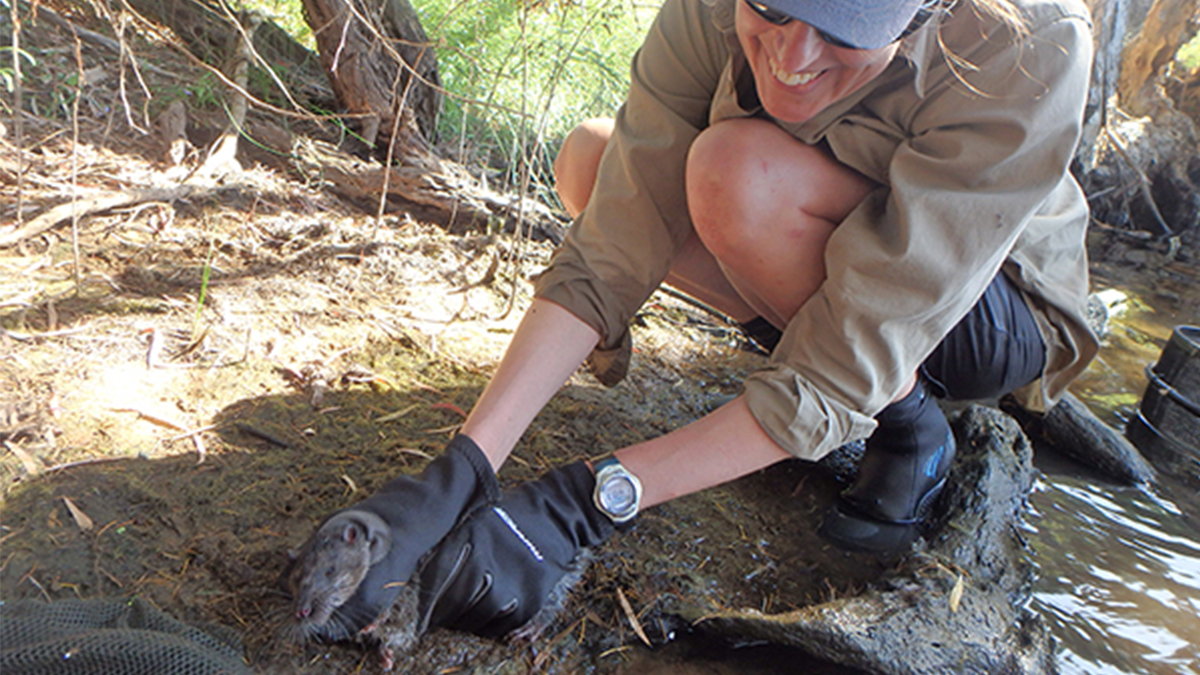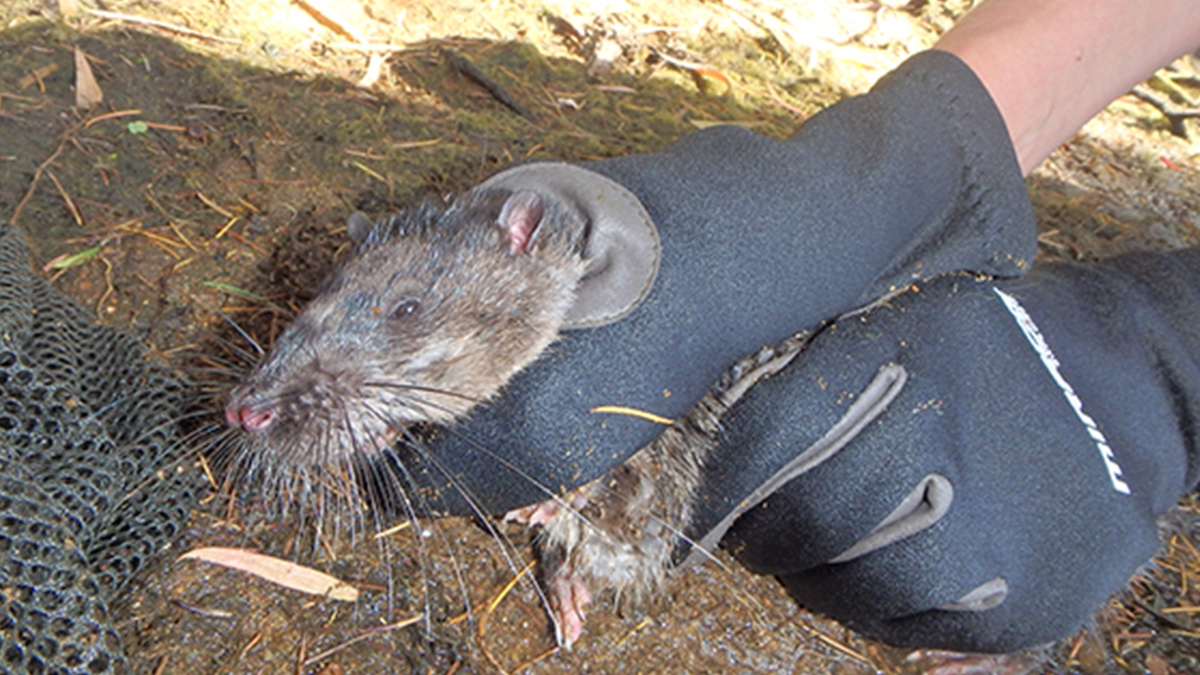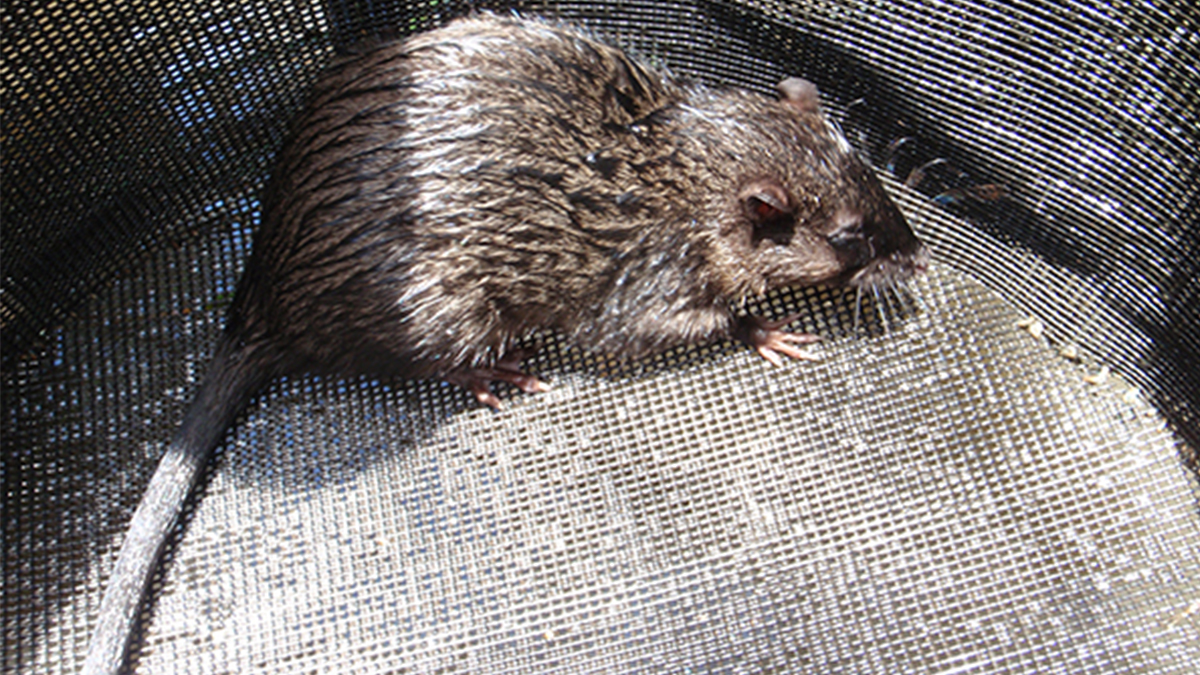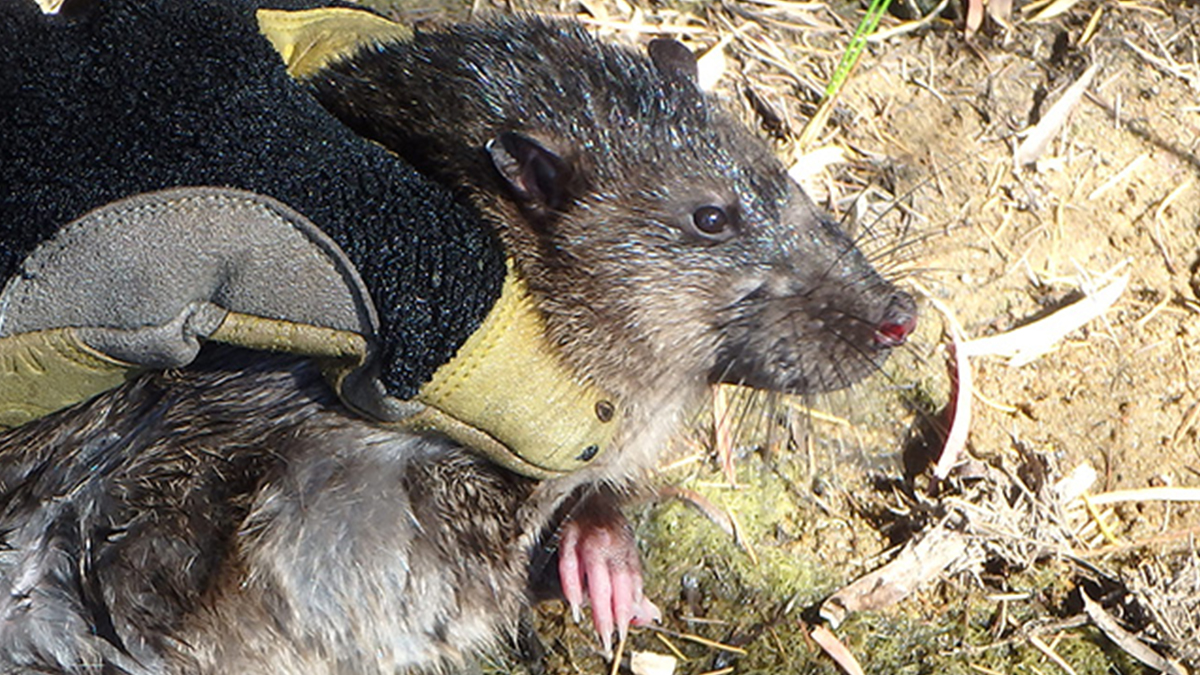Rakali - water rat - Hydromys chrysogaster
Identification
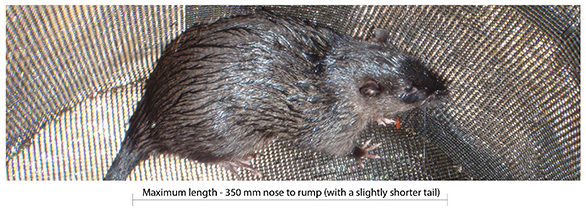
The Rakali, or water rat, occupies a unique niche within south-west systems, being the only amphibious or semiaquatic species in the region (feeding largely underwater, but living on land). It has partially webbed hind legs and waterproof fur - more akin to platypus or otters in lifestyle than the land rats which they have previously been confused with.
It also has a remarkable array of sensory whiskers on its head, which it uses to forage underwater at night; clearly distinguishing it from the terrestrial invasive rats.
Found up to 70 cm (measured from nose to end of the tail; with the tail generally slightly less than half the length) and weighing just over a kilogram.
They are black to brown in colour with an orange to white belly, and dark tail with a white tip. Juveniles can be lighter brown to grey (see gallery).
Water rats have the rare ability to be able to kill and eat the introduced cane toads that are invading the wet-dry tropics of Australia - where they flip the toads over to avoid the poisonous glands found on the back of the neck.
The species is not actively targeted by the standard assessment methods used in the Healthy Rivers program, however they will periodically turn up in fish traps, and signs of their existence is sometimes observed (e.g. feeding middens).
Distribution
A distribution map is not provided for this species as targeted-sampling has not been conducted (within the Healthy Rivers program) to enable accurate reporting of its range.
However, based on a survey conducted in 2014-15 (Trocini et al. 2015), the species is broadly expected to occur through much of the south-west.
It is also found in all other Australian states and territories, as well as Papua New Guinea and Indonesian West Papua.
Habitat
Lives in burrows on low banks of rivers, lakes, wetlands, estuaries and even along the coast. Intact riparian vegetation and associated bank stability is critical to their survival.
A nocturnal species, hunting macroinvertebrates, fish and crustaceans, molluscs frogs and even water birds and bird eggs.
They are territorial, largely solitary within a home range of around 1–4 km of waterways.
Biology
Females are able to reproduce from one year old, mating between late winter and early spring. Up to around 4-5 young arrive around 1 month after mating.
A single female will produce only 4-5 litters over their life of around 3-4 years.
Conservation status
Although common and widespread throughout Australia, there has been declines locally due to loss and degradation of streamside habitat, concomitant salinisation, drying largely due to climate change, and predation by introduced species such as cats and foxes.
Hydromys chrysogaster is listed by the Department of Biodiversity Conservation and Attractions as a Priority 4 species (Rare, Near Threatened and other species in need of monitoring).
Priority 4 species are those that are adequately known, are rare but not threatened, meet criteria for near threatened, or have been recently removed from the threatened species or other specially protected fauna lists for other than taxonomic reasons. These species require regular monitoring.
Assessment of Priority codes is based on the Western Australian distribution of the species, unless the distribution in WA is part of a contiguous population extending into adjacent States, as defined by the known spread of locations
Management
The key conservation action for this species is stream restoration to improve vegetation structure through river corridors, and to protect or restore instream habitat and water quality (to support prey species).
Care is also needed by researchers and recreational fishers who use submerged traps, as Rakali are known to enter traps (either by accident or to forgage on trapped crayfish) and will perish if they cant get access to air (see image below). The Healthy Rivers program has developed a number of trapping methods designed to avoid impacts to Rakali, including:
- use of specialised floats placed in the end of fyke nets to provide both access to air and also a platform to rest until field officers can remove them.
- trialling screens on the entry of fyke nets to limit their access to traps.
- using small openings on small-fish and -crayfish traps to restrict access of water rats
- and, in areas of known water rat activity, deploying large-crayfish box traps with access to air.
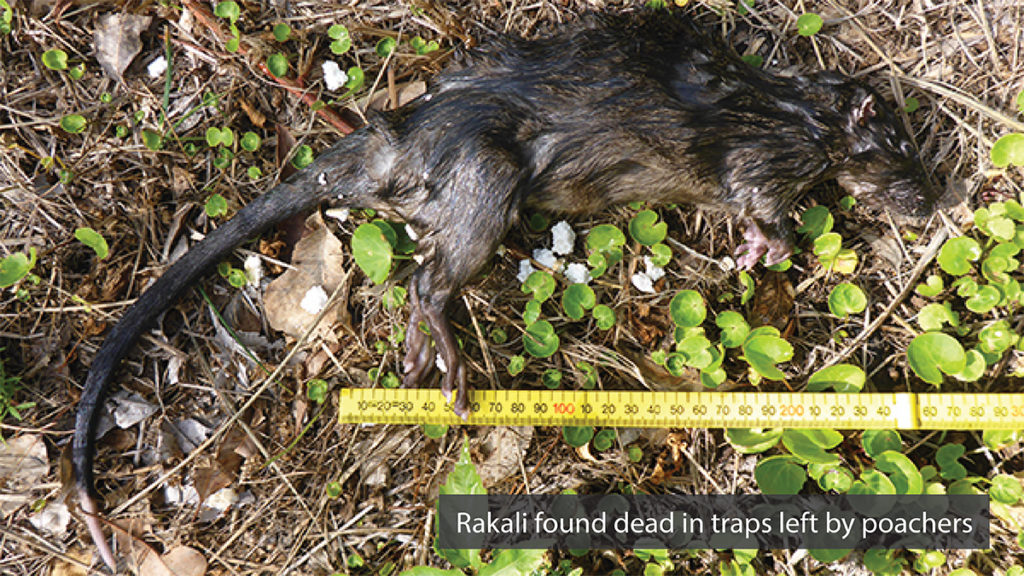
Further information
For some additional information on this species, including some interesting news about their rapid adaptation to hunt and eat one of Australia’s most toxic introduced species – the invasive cane toad, go here.
